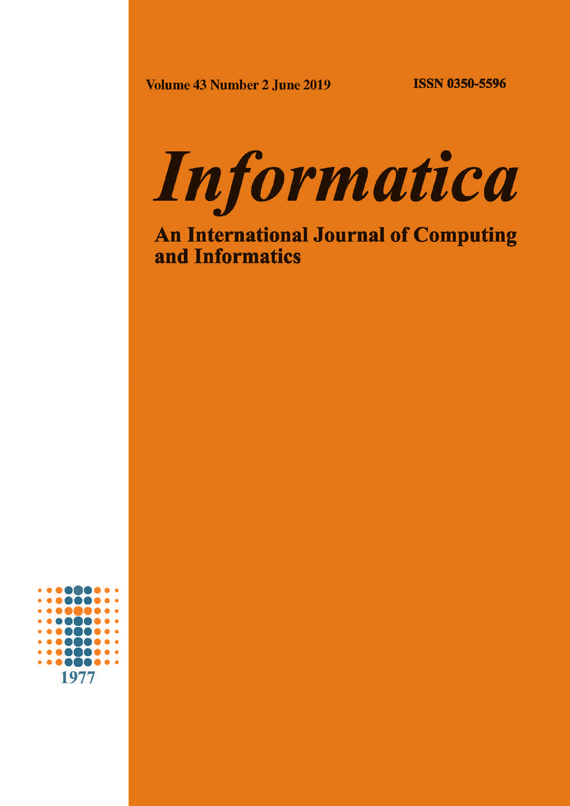The Permutable k-means for the Bi-Partial Criterion
DOI:
https://doi.org/10.31449/inf.v43i2.2090Abstract
The here applied objective function for clustering consists of two parts, where the first one takes into account intra-cluster relations, and the second – inter-cluster ones. In the case of k-means algorithm, such bi-partial objective function combines cluster dispersions with inter-cluster similarity, to be jointly minimized. The first part only of such objective function provides the “standard” quality of clustering based on distances between objects (the well-known classical k-means). To improve the clustering quality based on the bi-partial objective function, we need to develop the permutable version of k-means algorithm. This paper shows the permutable k-means that appears to be a new type of clustering procedure.
References
Jan W. Owsinski (2012). On the optimal division of an empirical distribution (and some related prob-lems). Przegląd Statystyczny, special issue, 1, 109-122.
Jan W. Owsinski (2013). On dividing an empirical distribution into optimal segments. Retrieved June 3, 2017 from http://new.sis-statistica.org/wp-content/uploads/2013/09/RS12-On-Dividing-an-Empirical-Distribution-into.pdf
Jan W. Owsinski (2011). The bi-partial approach in clustering and ordering: the model and the algo-rithms. Statistica & Applicazioni. Special Issue, 43–59.
Sergey D. Dvoenko (2009). Clustering and separat-ing of a set of members in terms of mutual distances and similarities. Transactions on MLDM. IBaI Pub-lishing 2, 2 (Oct. 2009), 80-99.
Sergey Dvoenko (2014). Meanless k-means as k-meanless clustering with the bi-partial approach. In Proceedings of 12th Int. Conf. on Pattern Recogni-tion and Image Processing (PRIP’2014). UIIP NASB, Minsk, Belarus, 50-54.
W.S. Torgerson (1958). Theory and Methods of Scaling. Wiley, New York, NY.
Ronald A. Fisher (1936). The use of multiple mea-surements in taxonomic problems. Ann. Eugenics. 7, 2 (Sept. 1936), 179-188. DOI:http://dx.doi.org/10.1111/j.1469-1809.1936.tb02137.x
Sergey D. Dvoenko, and Denis O. Pshenichny (2016). A recovering of violated metric in machine learning. In Proceedings of 8th Int. Symposium on Information and Communication Technology (SoICT’2016). ACM NY, 15-21. DOI:http://dx.doi.org/10.1145/3011077.3011084
Downloads
Published
Issue
Section
License
I assign to Informatica, An International Journal of Computing and Informatics ("Journal") the copyright in the manuscript identified above and any additional material (figures, tables, illustrations, software or other information intended for publication) submitted as part of or as a supplement to the manuscript ("Paper") in all forms and media throughout the world, in all languages, for the full term of copyright, effective when and if the article is accepted for publication. This transfer includes the right to reproduce and/or to distribute the Paper to other journals or digital libraries in electronic and online forms and systems.
I understand that I retain the rights to use the pre-prints, off-prints, accepted manuscript and published journal Paper for personal use, scholarly purposes and internal institutional use.
In certain cases, I can ask for retaining the publishing rights of the Paper. The Journal can permit or deny the request for publishing rights, to which I fully agree.
I declare that the submitted Paper is original, has been written by the stated authors and has not been published elsewhere nor is currently being considered for publication by any other journal and will not be submitted for such review while under review by this Journal. The Paper contains no material that violates proprietary rights of any other person or entity. I have obtained written permission from copyright owners for any excerpts from copyrighted works that are included and have credited the sources in my article. I have informed the co-author(s) of the terms of this publishing agreement.
Copyright © Slovenian Society Informatika








